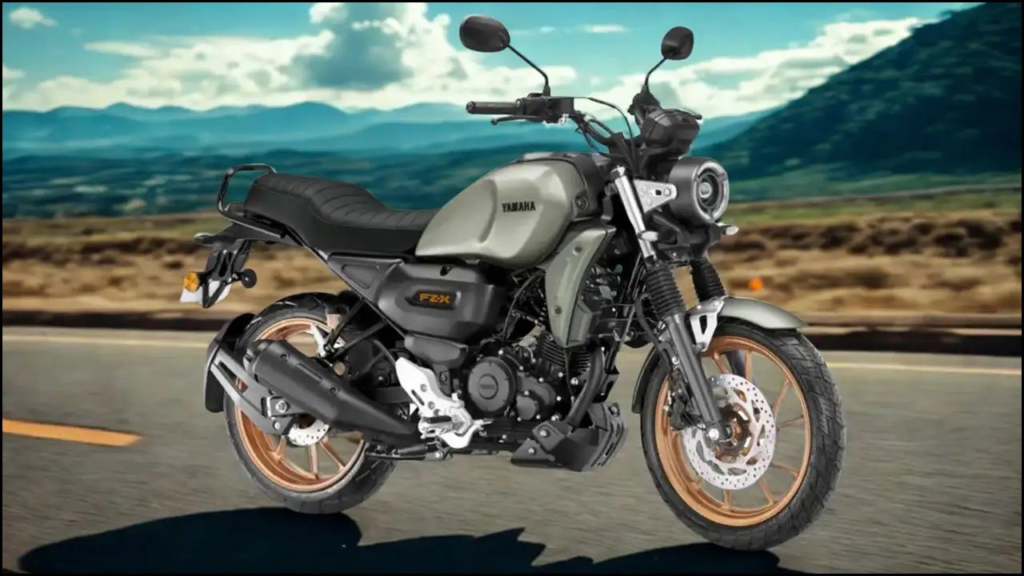
Yamaha Motor India has launched the Yamaha FZ-X Hybrid motorcycle at an introductory price of ₹1.49 lakh (ex-showroom). The model brings Smart Motor Generator (SMG) technology, improved fuel efficiency, and modern connectivity features to India’s expanding hybrid two-wheeler segment. It positions Yamaha at the forefront of a growing trend toward low-emission, intelligent mobility solutions in urban markets.
A New Step in India’s Hybrid Two-Wheeler Market
The launch of the Yamaha FZ-X Hybrid reflects a strategic shift in the motorcycle industry, where manufacturers are blending internal combustion with hybrid technology to meet evolving emissions regulations and consumer expectations.
The bike retains the familiar 149 cc single-cylinder, air-cooled engine, delivering around 12.4 bhp and 13.3 Nm of torque. However, the addition of Yamaha’s SMG system offers better low-end response, silent starts, and idle start-stop capabilities.
“This launch reflects our long-term commitment to energy-efficient mobility,” said Eishin Chihana, Chairman of Yamaha Motor India. “The Yamaha FZ-X Hybrid delivers superior riding comfort while supporting India’s sustainable transportation goals.”
How the Yamaha Hybrid System Works
The Smart Motor Generator (SMG) is a mild hybrid system integrated directly with the engine. Instead of functioning as a separate motor, the SMG acts as both an electric starter and a power assist.
When the rider accelerates from a stop, the SMG provides instant torque to reduce engine load and improve fuel efficiency. During deceleration, it recovers energy to recharge the battery. This system differs from full hybrids, which can operate purely on electric power, but significantly reduces fuel consumption and emissions in congested city traffic.
According to Yamaha’s technical documentation, the hybrid system can boost efficiency by up to 8–10% compared to the standard FZ-X model.
Yamaha FZ-X Hybrid Smart Connectivity and Rider-Centric Features
The FZ-X Hybrid introduces a 4.2-inch TFT instrument cluster, enabling Bluetooth connectivity, turn-by-turn navigation, and call/message alerts through the Y-Connect smartphone app.
Yamaha has also added Traction Control System (TCS), a feature usually seen on larger, more expensive motorcycles. The combination of connectivity and safety systems aims to appeal to urban professionals and younger riders who value both convenience and performance.
Target Buyers and Consumer Trends
Yamaha is targeting riders between 21 and 35 years old — a demographic that increasingly seeks eco-friendly, low-maintenance commuting options without fully committing to electric vehicles.
“Hybrid motorcycles offer the best of both worlds,” said Anita Reddy, a senior auto market analyst at RedSeer Consulting. “They provide immediate benefits in fuel savings while easing buyers into electrified mobility.”
Dealers also report increased interest in connected features, with urban buyers viewing motorcycles as extensions of their digital lifestyles.
Policy Backdrop: Tax Incentives Driving Adoption
The Yamaha FZ-X Hybrid launch comes shortly after India’s Goods and Services Tax (GST) reduction on hybrid vehicles. Previously taxed at 28%, hybrids are now taxed at 12%, making them more competitive against conventional ICE bikes.
As a result, Yamaha expects a price benefit of approximately ₹12,000, depending on the state. “This policy shift provides the economic nudge needed for hybrid adoption,” said Dr. Rajiv Sharma, an automotive policy researcher at the Indian Institute of Technology Delhi.
These incentives mirror India’s larger decarbonisation strategy, which combines EV promotion with transitional hybrid technologies.
Competitive Landscape: Yamaha Bets Early
Several manufacturers are preparing to launch their own hybrid two-wheelers in India. Hero MotoCorp and Honda are expected to unveil similar models by early 2026.
| Model | Engine | Hybrid System | Estimated Price | Launch |
|---|---|---|---|---|
| Yamaha FZ-X Hybrid | 149 cc | SMG | ₹1.49 lakh | Oct 2025 |
| Hero Xpulse Hybrid (expected) | 150 cc | Mild Hybrid | ₹1.45 lakh | Q1 2026 |
| Honda Shine Hybrid (expected) | 125 cc | Integrated Starter Generator | ₹1.40 lakh | Q2 2026 |
By being one of the first mainstream hybrid motorcycles in this category, Yamaha aims to capture early adopter market share.
Early Reactions: Smooth, Quiet, Efficient
Initial ride impressions from journalists and early test riders have been largely positive.
“The hybrid assist is most noticeable in stop-and-go traffic,” said Rohit Singh, auto journalist at AutoCar India. “The bike accelerates smoothly, and the silent start is a refreshing change.”
Some riders noted that the hybrid system adds slightly more weight to the bike, but comfort, ride quality, and efficiency remain strong selling points. Yamaha reports a real-world mileage of 48–52 km/l, slightly higher than the standard variant.
Global Strategy: India as a Hybrid Launchpad
Yamaha has stated that India will serve as a strategic market for its hybrid and EV expansion. Similar SMG-based models may be introduced in Southeast Asia and Africa, where urban congestion and fuel costs are rising.
“India offers scale and consumer diversity,” said Eishin Chihana. “The FZ-X Hybrid is an important step in our multi-pathway approach to sustainable mobility.”
Looking Ahead: A Transitional Technology
Industry experts agree that hybrids are not a permanent solution, but they bridge the gap between ICE and electric motorcycles. With infrastructure for EVs still developing in many Indian cities, hybrid technology offers immediate environmental and economic benefits.
Yamaha is expected to expand its Blue Square dealership network and introduce hybrid training programs for technicians to support after-sales service.
Yamaha R15 V5 Bumper Sale: Powerful Features & 60 kmpl Mileage for Young Riders!
Conclusion
The Yamaha FZ-X Hybrid is more than just another commuter motorcycle. It represents a shift in India’s two-wheeler market, where technology, policy, and consumer behavior are converging to accelerate the move toward cleaner, smarter mobility.
With competitive pricing, government incentives, and technological advantages, Yamaha may have positioned itself as an early leader in India’s hybrid motorcycle space.

















